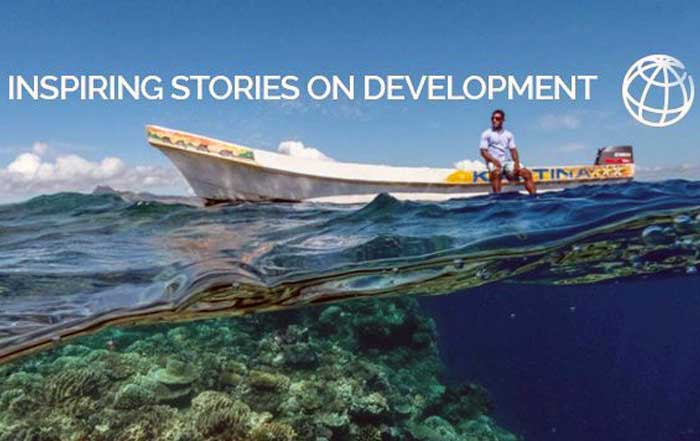Germany’s economy, long known for its precision engineering, industrial prowess, and financial discipline, continues to evolve rapidly and as Europe’s largest economy, it remains a global leader in innovation, sustainable finance, and cross-border investment. The country’s business and financial sectors have transformed over the past decade through the integration of artificial intelligence, digital banking, renewable energy financing, and regulatory modernization, creating a diverse range of high-paying roles for experienced professionals.
According to recent analyses by the Bundesbank and Statista, Germany’s finance and business job markets are shifting toward roles that blend traditional financial expertise with digital and strategic skills. This convergence is driving demand for professionals who can navigate both economic complexity and technological disruption. The cities of Frankfurt, Munich, Berlin, and Hamburg have emerged as primary financial centers, hosting multinational corporations, fintech startups, and European headquarters of major investment firms.
Learn more about the German economy and its structural trends on upbizinfo.com/economy.
The Strategic Role of Germany in the Global Financial System
Germany’s central position in Europe gives it unique influence across the global financial landscape. The presence of the European Central Bank (ECB) in Frankfurt, coupled with Germany’s leadership in the European Union’s fiscal and monetary frameworks, solidifies its role as a stabilizing force in international finance. Global corporations are drawn to Germany’s transparent regulatory environment, reliable infrastructure, and deep capital markets.
In 2025, high-paying careers in Germany’s financial ecosystem are no longer limited to investment banking or corporate finance. Instead, lucrative opportunities now exist across fintech innovation, risk analytics, sustainable finance, and data-driven decision-making. Professionals capable of combining financial insight with AI-driven technologies have become indispensable to firms aiming to remain competitive.
Read more about the transformation of international business ecosystems at upbizinfo.com/world.
Investment Banking and Corporate Finance Leadership
The traditional backbone of Germany’s financial industry—investment banking and corporate finance—continues to offer some of the highest salaries in the country. Major institutions such as Deutsche Bank, Commerzbank, and Goldman Sachs Germany lead in advisory, mergers and acquisitions (M&A), and structured finance. These firms seek professionals who possess not only quantitative acumen but also cultural intelligence to navigate international markets.
Corporate finance directors, M&A consultants, and equity analysts in Frankfurt can earn well above €150,000 annually, with senior executives reaching beyond €250,000, excluding performance-based bonuses. Many of these roles are concentrated in Frankfurt’s financial district, where Germany’s proximity to EU decision-making gives professionals access to the most critical policy and market developments shaping Europe.
As businesses seek global expansion and digital transformation, advisory firms such as PwC, EY, KPMG, and Deloitte Germany have expanded their consulting divisions, offering lucrative packages to financial strategists and digital transformation specialists. These professionals are increasingly involved in advising corporations on sustainability reporting, ESG compliance, and green financing initiatives—sectors that have seen explosive growth since 2020.
Learn more about emerging corporate leadership trends on upbizinfo.com/business.
Fintech Revolution and Emerging Digital Finance Roles
Germany’s fintech sector has become one of Europe’s most dynamic in 2025. With Berlin emerging as a leading hub for financial innovation, startups such as N26, Trade Republic, and Solarisbank are redefining how Germans interact with money, savings, and investment platforms.
Fintech professionals specializing in data science, machine learning, blockchain, and digital compliance are among the best-paid in the sector. Chief Technology Officers (CTOs), blockchain architects, and AI-based risk analysts command annual compensations between €120,000 and €250,000 depending on experience and company size. These positions require not only technical proficiency but also an understanding of financial regulations and consumer trust frameworks, both critical in Europe’s evolving digital finance landscape.
International collaboration between German fintechs and global platforms such as Stripe, PayPal, and Revolut has driven growth in cross-border payment solutions, increasing the need for skilled professionals who can manage regulatory alignment across the EU and beyond. Germany’s adherence to MiCA (Markets in Crypto-Assets) regulation has further strengthened its reputation as a fintech-friendly nation.
Explore Germany’s fintech developments at upbizinfo.com/crypto and discover broader AI applications at upbizinfo.com/ai.
Sustainable Finance and ESG Investment Management
Germany’s transition toward a green economy has sparked enormous demand for sustainable finance experts. As global investors and corporations align with the European Green Deal and the UN Sustainable Development Goals (SDGs), sustainability-linked investment products are reshaping the business landscape.
Institutions such as Deutsche Börse Group, Allianz Global Investors, and DZ Bank have launched major ESG-focused initiatives, creating opportunities for sustainability analysts, green bond portfolio managers, and ESG compliance officers. These roles command competitive compensation ranging from €100,000 to €200,000 per year, reflecting the complexity of managing environmental data, regulatory requirements, and investor expectations.
The field of sustainable finance combines analytical rigor with ethical accountability. Professionals working in ESG roles are expected to evaluate corporate sustainability strategies, integrate non-financial metrics into investment decisions, and help firms transition to lower-carbon operations. With Germany committed to achieving net-zero emissions by 2045, expertise in this area continues to grow in importance.
Learn more about sustainability-focused business strategies at upbizinfo.com/sustainable.
🇩🇪 Germany's Highest-Paying Finance & Business Careers 2025
Explore lucrative opportunities across sectors driving Europe's largest economy
💰 Fintech Sector Salary Comparison
Private Equity and Venture Capital in a High-Growth Market
Germany’s private equity and venture capital (VC) sectors remain highly profitable, driven by an expanding startup ecosystem and renewed interest from international investors. The country’s VC activity has surged, particularly in green technologies, AI startups, and mobility innovations. Leading firms such as Rocket Internet, Earlybird Venture Capital, and Holtzbrinck Ventures are investing aggressively in scalable European startups.
Private equity professionals—especially those involved in fund management, due diligence, and exit strategy planning—can expect annual salaries ranging from €180,000 to €400,000, with top-tier partners earning significantly more. Germany’s favorable tax structures for long-term investments and the presence of numerous family-owned enterprises seeking strategic investors have created an ideal environment for dealmakers.
Berlin and Munich serve as epicenters for venture financing, attracting professionals who bridge technology entrepreneurship with capital market expertise. VC analysts, fund managers, and investment partners play crucial roles in guiding startups through fundraising rounds, scaling strategies, and international expansion, helping strengthen Germany’s position as Europe’s innovation powerhouse.
Read more about investment sector trends at upbizinfo.com/investment.
Risk Management, Compliance, and Regulatory Leadership
In 2025, the increasing complexity of global financial systems has elevated the importance of risk management and regulatory compliance within German corporations and financial institutions. The financial crises of previous decades, coupled with the digital transformation of banking, have compelled organizations to hire professionals who can ensure operational resilience, cybersecurity, and adherence to EU and international regulations.
Risk management directors, compliance officers, and chief risk officers (CROs) in Germany earn among the highest salaries in the financial world, often ranging between €150,000 and €300,000 annually. Their expertise spans across areas such as Basel III/IV compliance, anti-money laundering (AML) controls, GDPR, and cyber risk mitigation. As digital platforms grow, the integration of artificial intelligence in compliance monitoring—through companies like Regnology, Fenergo, and ComplyAdvantage—has become essential.
Moreover, the growing influence of BaFin (Federal Financial Supervisory Authority) continues to shape the framework within which German financial institutions operate. Compliance executives with deep regulatory knowledge and technical expertise are in particularly high demand. This combination of finance, law, and data analytics defines the new generation of regulatory professionals in the German market.
Learn more about regulatory dynamics in the global financial system at upbizinfo.com/banking.
Data Analytics and Artificial Intelligence in Finance
The fusion of artificial intelligence and data analytics has revolutionized the finance industry. In Germany, major banks, insurance companies, and asset management firms are using AI to predict market trends, automate portfolio rebalancing, detect fraud, and personalize customer services.
Professionals specializing in quantitative analytics, machine learning, and data-driven finance are some of the highest-paid employees in 2025, with annual salaries reaching up to €250,000 for senior AI strategists. These experts work closely with algorithmic trading desks, corporate finance departments, and risk management teams to turn data insights into actionable business decisions.
Leading institutions such as Allianz, Munich Re, Deutsche Bank, and Commerzbank have expanded their in-house AI divisions, while collaborating with research institutes like the Fraunhofer Institute for Intelligent Analysis and Information Systems (IAIS). Their focus extends beyond automation to the ethical use of AI, ensuring that decision-making systems maintain transparency and accountability.
Germany’s strong emphasis on data protection has also led to the emergence of AI governance specialists—professionals responsible for ensuring responsible data usage in financial modeling. The combination of technical precision and ethical oversight is a hallmark of the German approach to AI in finance.
Learn more about AI and automation in modern industries on upbizinfo.com/technology and upbizinfo.com/ai.
Corporate Strategy, Management Consulting, and Digital Transformation
Another sector commanding high salaries is management consulting and corporate strategy, where firms assist clients in restructuring operations, entering new markets, or adopting digital platforms. The consulting industry in Germany is dominated by global players such as McKinsey & Company, Boston Consulting Group (BCG), and Roland Berger, along with a growing number of specialized digital transformation consultancies.
Senior management consultants, corporate strategists, and business transformation leaders earn between €120,000 and €300,000 annually, depending on project scale and sector focus. Professionals in this category are expected to bring deep analytical thinking, leadership, and a multidisciplinary understanding of both technology and human capital management.
In 2025, consulting firms increasingly focus on sustainability transformation, helping corporations realign business models to meet ESG objectives while maintaining profitability. German consulting experts play a critical role in shaping the strategic direction of global corporations operating from or through Germany. The integration of AI tools into strategy consulting further enhances efficiency and predictive capabilities, offering clients real-time insights into market shifts.
Discover insights on the evolution of modern business leadership at upbizinfo.com/founders.
Wealth Management and Private Banking Excellence
Germany’s reputation for financial prudence and privacy has fostered a robust private banking and wealth management industry. As Germany’s affluent population and international investors seek stable financial planning amid global volatility, the demand for wealth advisors, portfolio managers, and family office executives continues to climb.
Top-tier private bankers and wealth managers in Frankfurt, Munich, and Zurich (for cross-border operations) earn between €150,000 and €400,000 annually. The profession is evolving beyond traditional asset allocation to include digital wealth management, impact investing, and crypto-asset diversification.
Institutions such as Deutsche Bank Wealth Management, UBS Germany, and Julius Baer are blending human advisory expertise with algorithmic investment platforms, delivering personalized solutions that appeal to both high-net-worth individuals and institutional investors. This blend of innovation and tradition ensures the German private banking system remains one of the most trusted globally.
For insights into global investment dynamics and private banking trends, explore upbizinfo.com/investment.
Accounting, Auditing, and Financial Controllership
While accounting and auditing are often seen as conventional roles, their strategic importance in corporate governance has grown significantly. As transparency becomes a core component of corporate reputation, German firms are elevating the roles of chief financial officers (CFOs), auditors, and financial controllers to leadership positions.
CFOs in top German corporations such as Siemens, Volkswagen Group, and BASF can earn compensation packages exceeding €300,000 annually, supported by performance incentives and stock options. The evolving regulatory environment, driven by global accounting standards (IFRS) and ESG reporting, has made expertise in integrated financial reporting highly valuable.
Moreover, the rise of digital auditing tools—powered by automation and predictive analytics—has transformed the profession. Accounting firms are increasingly hiring professionals who understand both data visualization and financial compliance. This shift underscores the growing intersection between financial accuracy and digital fluency.
Learn more about business management excellence at upbizinfo.com/business.
Economic Research and Policy Advisory Roles
Beyond corporate finance, Germany’s economic ecosystem provides rewarding opportunities for economists, policy advisors, and financial researchers. Working in institutions such as the Deutsche Bundesbank, European Central Bank, and ifo Institute, these professionals analyze macroeconomic trends, design fiscal policy recommendations, and support international trade agreements.
Economists in senior positions can earn between €120,000 and €200,000 annually, with additional benefits tied to government service or international policy consultancy. Germany’s influence in European and global policymaking creates unique opportunities for financial experts to impact decisions that shape markets worldwide.
These roles require advanced analytical capabilities, econometric expertise, and a profound understanding of the interplay between global financial markets and domestic economic priorities. The increasing reliance on data-driven policy modeling also places AI and statistical programming skills at the forefront of modern economic research.
Explore detailed reports on global economic trends at upbizinfo.com/economy.
Insurance, Actuarial Science, and Risk-Based Finance
Germany’s insurance sector stands as one of the most mature and financially stable in the world. Global giants such as Allianz SE, Munich Re, and Hannover Re dominate the landscape, offering lucrative employment opportunities in actuarial science, underwriting, risk modeling, and reinsurance management. As climate risks, geopolitical uncertainty, and global health factors reshape the insurance industry, actuarial expertise is more critical than ever.
Highly skilled actuaries and risk modelers in Germany often earn between €120,000 and €250,000 annually, with senior management professionals—especially those in reinsurance—earning well above that range. These positions demand advanced statistical and mathematical capabilities, as well as fluency in predictive analytics and catastrophe modeling.
The role of actuaries is evolving from pure risk calculation to strategic business planning. Companies now rely on actuarial scientists to assess the financial implications of sustainability projects, longevity risk, and cyber liability. The intersection of data analytics and traditional insurance models makes this one of the most intellectually rigorous and well-compensated career paths in finance today.
To understand how technology and predictive modeling are transforming finance, visit upbizinfo.com/technology.
The Rise of Cryptocurrency, Digital Assets, and Blockchain Finance
The digital finance revolution has not bypassed Germany. The country has emerged as one of Europe’s most progressive regulators of blockchain, cryptocurrencies, and digital assets, creating an ecosystem ripe with opportunity for innovators. The BaFin licensing regime now allows fintechs and banks to operate cryptocurrency custody and trading services legally, making Germany a magnet for blockchain entrepreneurs and investors.
High-paying roles in this space include blockchain developers, DeFi analysts, crypto compliance officers, and digital asset portfolio managers, with salaries ranging from €100,000 to €300,000 annually depending on specialization and seniority. Berlin, in particular, has become a hub for crypto innovation, hosting events such as Blockchain Week Berlin and attracting investment from across Europe and Asia.
German banks like Commerzbank and DZ Bank have begun tokenizing assets on blockchain platforms, while startups such as Bitpanda, Tangany, and Upvest are building infrastructure for decentralized finance. Professionals in this space must navigate the intersection of regulatory complexity, emerging technology, and market volatility—a combination that commands premium compensation and recognition across global markets.
To explore trends in digital assets and blockchain policy, read more at upbizinfo.com/crypto.
Human Capital and Leadership in Financial Institutions
As financial systems become more technologically advanced, human leadership remains essential to sustaining organizational integrity and culture. Germany’s financial firms are increasingly emphasizing leadership that blends empathy with strategic insight, especially in the era of automation and hybrid work.
Chief Human Resource Officers (CHROs), talent acquisition specialists, and leadership development directors in major financial institutions are earning between €120,000 and €220,000 annually. Their roles include guiding workforce transformation, managing cross-border teams, and fostering inclusive corporate cultures. The push toward diversity, equity, and inclusion (DEI) in finance has created new leadership roles focusing on social governance within corporate structures.
Moreover, executive coaches and consultants specializing in organizational change management are highly sought after, particularly by global firms navigating post-pandemic restructuring. The emphasis is no longer just on profit but on purpose—ensuring that companies build resilient workforces capable of adapting to rapid technological and regulatory shifts.
For deeper insights into employment and leadership dynamics, visit upbizinfo.com/employment and upbizinfo.com/jobs.
Marketing and Business Development in Finance
In 2025, marketing in the financial industry has evolved beyond advertising and branding—it is now an analytical discipline driven by digital engagement, content intelligence, and trust-based communication. Germany’s banks, asset managers, and fintech startups are investing heavily in digital marketing, customer analytics, and growth strategy roles to differentiate themselves in competitive markets.
Marketing directors and digital brand strategists in financial services earn between €90,000 and €200,000 per year, depending on organization scale and audience reach. These roles are critical in helping companies translate technical financial offerings into customer-centric narratives that attract both retail and institutional clients.
With the expansion of social media regulation in Europe, professionals in this field must ensure transparent communication and compliance with consumer protection laws. At the same time, personalization technologies powered by AI allow firms to deliver highly targeted financial products. Those who combine creative storytelling with regulatory understanding enjoy some of the most dynamic and high-paying opportunities in finance.
Discover the role of marketing innovation in modern business on upbizinfo.com/marketing.
The Digital Transformation of Banking and Financial Infrastructure
Germany’s digital banking revolution is redefining financial employment across all levels. The rise of neo-banks, AI-based credit systems, and digital payment solutions has accelerated since 2020, driven by consumer demand for mobile-first financial services. This evolution is creating new high-paying roles that merge technology and finance in unprecedented ways.
Positions such as chief digital officers, fintech systems architects, and payment platform directors earn salaries between €150,000 and €300,000 per year. These experts lead projects involving cloud banking, decentralized ledgers, and real-time cross-border transactions. German banks such as N26, Trade Republic, and Fidor Bank continue to set benchmarks for innovation, while legacy institutions like Deutsche Bank and Commerzbank have launched large-scale digitalization programs to compete effectively in the new landscape.
Additionally, collaborations between banks and technology firms have become common, integrating solutions from SAP, IBM, and Microsoft to build more efficient financial ecosystems. As these technologies advance, cybersecurity specialists and system auditors are in growing demand to safeguard financial integrity in the era of digital transactions.
Learn more about how digitalization is reshaping banking at upbizinfo.com/banking.
Cross-Border Trade Finance and Global Business Expansion
As the global economy rebounds from years of trade turbulence, Germany’s export-driven business model continues to create opportunities in trade finance, supply chain finance, and cross-border investment advisory. German financial institutions play a pivotal role in facilitating exports for the automotive, machinery, and renewable energy industries, making trade finance experts indispensable to the economy.
Trade finance managers, export credit analysts, and global liquidity specialists earn between €130,000 and €280,000 annually. These roles often require coordination between corporate clients, international banks, and government-backed entities such as Euler Hermes and KfW IPEX-Bank. The work is complex, involving documentation of international credit lines, risk hedging, and currency management strategies that support Germany’s position as a leading exporter.
The digitalization of trade documentation and blockchain-based supply chain tracking are further transforming the trade finance landscape. Professionals with expertise in both logistics and blockchain systems are in particularly high demand.
For updates on global business and investment trends, explore upbizinfo.com/world and upbizinfo.com/markets.
Financial Technology and Automation in Corporate Ecosystems
Germany’s corporate ecosystem has increasingly embraced financial technology (fintech) as a catalyst for efficiency and innovation. Automation tools, robotic process automation (RPA), and predictive analytics are reshaping how enterprises handle finance, procurement, and treasury operations. Large multinational corporations such as Siemens, BMW Group, and BASF have integrated advanced AI-driven financial systems to streamline forecasting, invoicing, and capital allocation.
As a result, new high-paying positions have emerged in financial systems integration, AI finance operations, and enterprise automation consulting. These roles combine deep knowledge of finance with expertise in digital platforms such as SAP S/4HANA, Oracle Financials, and Workday Adaptive Planning. Annual salaries for finance automation specialists range between €120,000 and €250,000, depending on project scale and leadership responsibility.
The automation trend is also empowering Chief Financial Officers (CFOs) to transition into more strategic roles, focusing less on manual reporting and more on forward-looking business modeling. This transformation represents a fundamental cultural shift in German corporate finance—one that blends human insight with technological intelligence to drive precision and performance.
To explore how AI and automation are transforming industries, visit upbizinfo.com/ai.
Real Estate and Infrastructure Finance: Long-Term Wealth Building
In 2025, real estate investment remains a cornerstone of wealth creation in Germany’s financial ecosystem. Despite cyclical slowdowns, the demand for sustainable infrastructure, energy-efficient construction, and urban redevelopment has generated stable high-income opportunities for finance professionals.
Investment analysts, portfolio managers, and project financiers specializing in real estate and infrastructure earn between €130,000 and €300,000 annually, with higher bonuses for those managing multi-billion-euro assets. Major players like Union Investment, Deutsche Pfandbriefbank, and Patrizia AG continue to expand their international property portfolios, focusing on green-certified developments and smart city projects.
Infrastructure finance experts, meanwhile, are working closely with both government agencies and private investors to fund renewable energy projects, transport upgrades, and digital connectivity expansions. These professionals require a unique blend of financial structuring, public policy awareness, and sustainability expertise—making them some of the most respected figures in Germany’s financial services sector.
Discover more about sustainable business models at upbizinfo.com/sustainable.
Mergers, Acquisitions, and Global Business Advisory
Germany’s position as a global industrial and technological hub ensures continuous activity in mergers and acquisitions (M&A), cross-border investment, and corporate restructuring. With multinational corporations seeking strategic realignments amid global uncertainty, M&A professionals are at the forefront of high-stakes dealmaking.
M&A specialists, investment bankers, and corporate advisors earn between €180,000 and €500,000 annually, with performance-based bonuses often doubling compensation. Firms such as Lazard, Rothschild & Co, and Morgan Stanley Germany lead the market in advisory services, supported by in-house legal teams and corporate strategists who manage due diligence, valuation, and integration processes.
Germany’s strength in industrial innovation—particularly in renewable energy, automotive technology, and biotech—has made it an attractive acquisition destination for foreign investors. M&A experts who combine technical sector knowledge with financial insight are in particularly high demand, especially in transactions involving digital transformation and intellectual property assets.
Learn more about corporate and investment leadership at upbizinfo.com/business.
Corporate Sustainability and Ethical Financial Governance
As global investors demand greater transparency and accountability, ethical finance has become one of the fastest-growing sectors in Germany’s business landscape. Financial institutions and corporations are integrating ethical governance, sustainability metrics, and social impact assessments into their strategic frameworks.
Sustainability officers, ethics compliance directors, and ESG auditors now hold positions equivalent in prestige and salary to senior financial controllers, earning between €120,000 and €250,000 annually. Their expertise spans environmental compliance, social equity evaluation, and corporate governance. Firms such as Allianz, BMW Group, and SAP are publicly committed to sustainable finance principles, setting benchmarks for corporate responsibility across Europe.
In addition to large corporations, small and medium-sized enterprises (SMEs) are increasingly aligning their financing strategies with ESG standards to attract investment and maintain credibility with global partners. Germany’s leadership in sustainable corporate governance reinforces its broader economic resilience and global reputation as a responsible business ecosystem.
Learn more about sustainability leadership and ethical finance practices on upbizinfo.com/sustainable.
International Mobility and Global Financial Careers
For professionals seeking international exposure, Germany offers access to global networks through its strong ties with the European Union, OECD, and World Bank. Many high-level finance executives based in Germany hold hybrid roles that involve managing operations in London, Zurich, Singapore, or New York, making it one of the most interconnected markets in the world.
Global corporate treasurers, international tax directors, and cross-border compliance experts earn among the highest compensations in Europe, often between €180,000 and €400,000 annually. These professionals operate at the intersection of finance, geopolitics, and strategy—navigating the regulatory and fiscal complexities of multinational expansion.
Germany’s centrality to Europe’s trade and monetary systems ensures that its finance professionals remain globally relevant. The rise of digital collaboration tools and hybrid work environments has further broadened opportunities for cross-border cooperation, enabling executives to oversee multinational operations without physical relocation.
For news and updates on global employment and executive trends, visit upbizinfo.com/news and upbizinfo.com/world.
Education, Skills, and Professional Qualifications for High-Paying Roles
To access these high-paying roles, professionals in Germany are increasingly pursuing advanced qualifications. The Chartered Financial Analyst (CFA) designation, Certified Management Accountant (CMA) certification, and specialized Master’s degrees in Finance or Data Analytics are now considered prerequisites for leadership roles.
Additionally, fluency in both German and English remains a strong advantage, especially in multinational corporations. Skills in programming languages such as Python, R, and SQL are becoming standard in data-driven finance. Executives with interdisciplinary backgrounds—combining economics, technology, and sustainability—are most likely to command premium salaries in 2025 and beyond.
German universities such as the Frankfurt School of Finance & Management, WHU – Otto Beisheim School of Management, and University of Mannheim continue to produce world-class graduates who feed directly into the global finance talent pipeline. The collaboration between academia and industry ensures that Germany maintains a steady supply of highly skilled professionals for its evolving business landscape.
Discover more about evolving career trends at upbizinfo.com/jobs and upbizinfo.com/employment.
Outlook for 2025 and Beyond
Germany’s business and finance sectors stand at a crucial intersection of innovation, regulation, and sustainability. High-paying roles are increasingly defined not only by financial performance but also by the ability to navigate complexity, embrace technology, and align with ethical governance. The convergence of fintech, sustainable investment, and AI-driven analytics is transforming traditional hierarchies, empowering a new generation of financial professionals who are adaptable, globally minded, and technologically proficient.
In the next decade, as automation accelerates and global markets become more interconnected, Germany will continue to serve as a central pillar of Europe’s economic stability. From the skyscrapers of Frankfurt to the tech labs of Berlin and the academic corridors of Munich, the country’s business and finance professionals are shaping the future of global commerce.
Germany’s economy thrives on precision, innovation, and trust—values that will ensure it remains one of the world’s most rewarding destinations for high-caliber business and finance careers.
For deeper insights into the global economy and future employment landscapes, visit upbizinfo.com.








